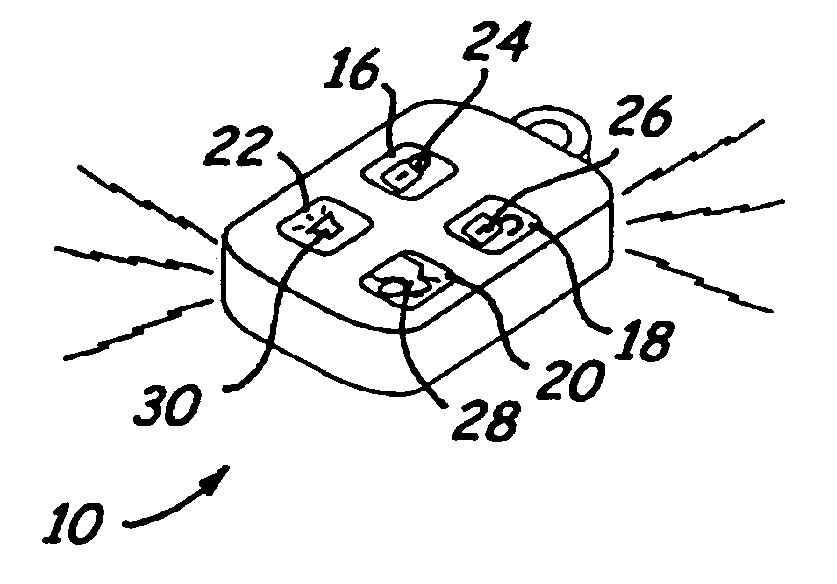Illuminated vehicle remote entry device
a remote entry device and keypad technology, applied in the direction of identification means, electrical apparatus casings/cabinets/drawers, instruments, etc., can solve the problems of uneven distribution of lighting on each button, limited packaging of lighting elements in the rke fob, and not so easily visible during night hours, so as to minimize the number of components required. , the effect of lighting the display area of the rke fob
- Summary
- Abstract
- Description
- Claims
- Application Information
AI Technical Summary
Benefits of technology
Problems solved by technology
Method used
Image
Examples
Embodiment Construction
[0021]FIG. 1 shows a remote vehicle interface device such as a remote keyless entry (RKE) fob 10 that broadcasts RF signals for unlocking and locking a vehicle door, unlatching a trunk latch, and for activating and deactivating a vehicle alarm system. A vehicle lock switch 16 and a vehicle unlock switch 18 are commonly disposed on a face of the RKE fob 10. The RKE fob 10 may further include a trunk unlatch switch 20 and alarm switch 22 for activating and deactivating the vehicle alarm. Graphics are typically printed on the face of a respective switch identifying the functionality of each respective switch. For example, the lock switch 16 may have a locked padlock graphic design 24, and the unlock switch 18 may include an unlocked padlock graphic design 26. Likewise, the trunk unlatch switch 20 may have an open trunk graphic 28 and the alarm switch 22 may have a siren graphic 30. RKE fobs may include other buttons for vehicle functionality such as open / close sliding door, remote star...
PUM
 Login to View More
Login to View More Abstract
Description
Claims
Application Information
 Login to View More
Login to View More - R&D
- Intellectual Property
- Life Sciences
- Materials
- Tech Scout
- Unparalleled Data Quality
- Higher Quality Content
- 60% Fewer Hallucinations
Browse by: Latest US Patents, China's latest patents, Technical Efficacy Thesaurus, Application Domain, Technology Topic, Popular Technical Reports.
© 2025 PatSnap. All rights reserved.Legal|Privacy policy|Modern Slavery Act Transparency Statement|Sitemap|About US| Contact US: help@patsnap.com



